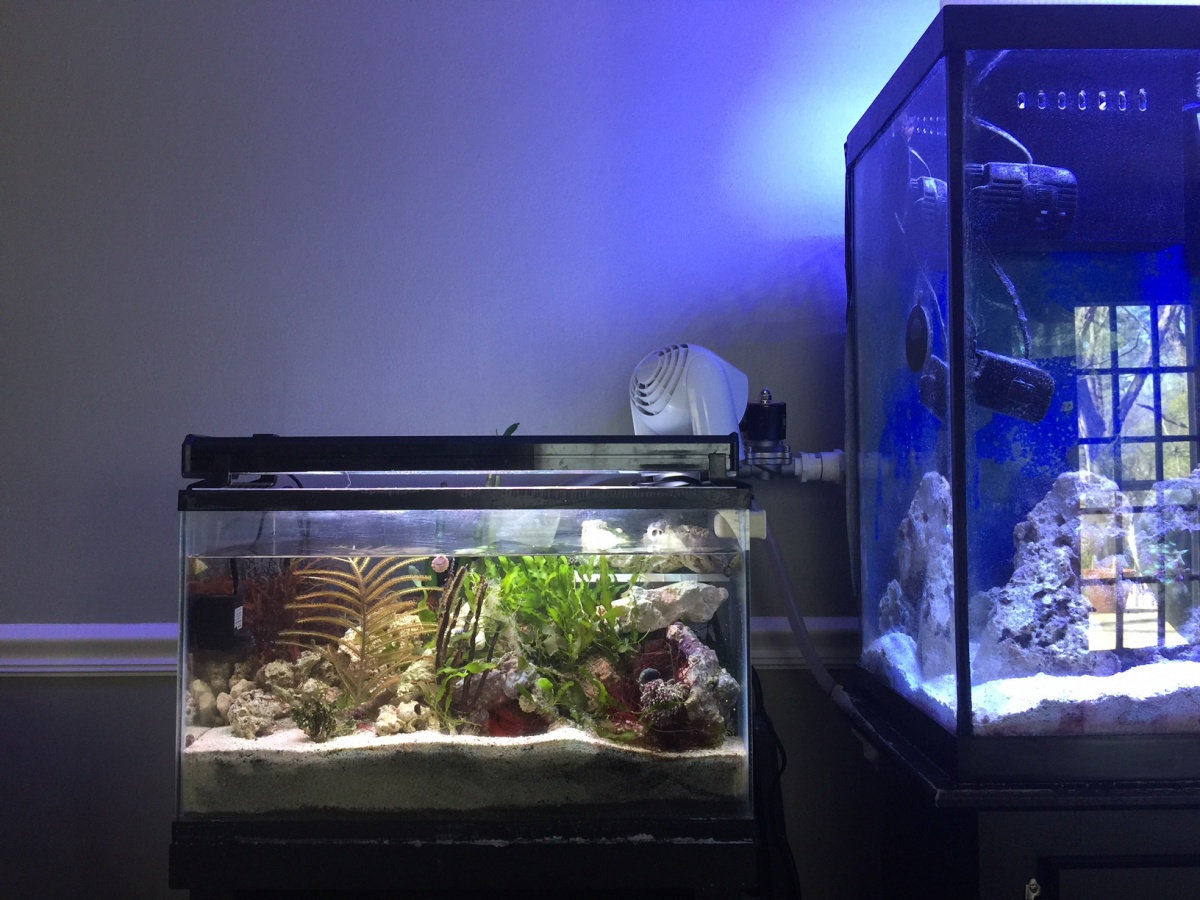ekean45
Aquarium Advice Activist
Good Day,
I'm wondering if anyone has tried this idea concerning overflowing a refugium. I know and understand several ways to prevent flooding in the event of a power outage...a check valve on the return line, siphon breaks, keeping the water level low enough so the refugium can handle the water...etc...
For the feed from the overflow box using gravity, has anyone ever used an irrigation solenoid? There are solenoids that when you do not have power, they are closed and do not allow flow through. But when you have a small current, maybe about 12 Volts, the valve stays open.
So if power is on and the pump is working, everything is good. If the power fails, a check valve prevents back flow from the return pump line and then the solenoid closes on the inflow line.
For added protection, if the pump fails (NOT FROM BEING CLOGGED), you can splice the pump wires to wire running to the solenoid, and it should close the solenoid valve.
Anything you can think of that might be an issue?
Thanks!
I'm wondering if anyone has tried this idea concerning overflowing a refugium. I know and understand several ways to prevent flooding in the event of a power outage...a check valve on the return line, siphon breaks, keeping the water level low enough so the refugium can handle the water...etc...
For the feed from the overflow box using gravity, has anyone ever used an irrigation solenoid? There are solenoids that when you do not have power, they are closed and do not allow flow through. But when you have a small current, maybe about 12 Volts, the valve stays open.
So if power is on and the pump is working, everything is good. If the power fails, a check valve prevents back flow from the return pump line and then the solenoid closes on the inflow line.
For added protection, if the pump fails (NOT FROM BEING CLOGGED), you can splice the pump wires to wire running to the solenoid, and it should close the solenoid valve.
Anything you can think of that might be an issue?
Thanks!


